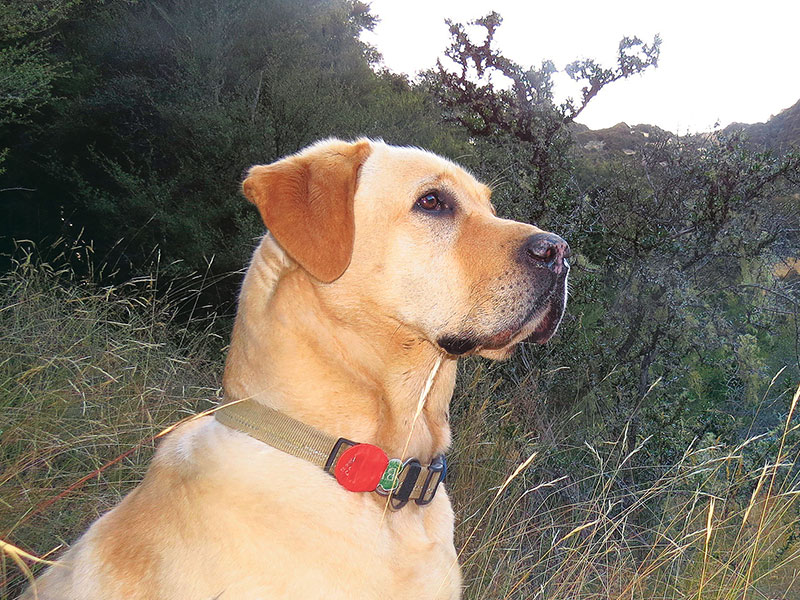Sharing the outdoors: being a good hunting buddy
4 min read
Dogs are always keen, positive, and never grumble – unlike most people. Photo: Ben Hope
A good dog, reasonable weather, and a successful day are three factors that go to make for a good duck or pheasant shoot. Dogs are just top company whether fishing or hunting but particularly for duck shooting. Dogs are positive, never grumble, and enjoy any outing.
A duck shooting buddy should be compatible with the unwritten rules and ethics of hunting. Basically, it comes down to virtues such as unselfishness and understanding others. A congenial, understanding, positive companion can enhance a successful trip and even make a blank morning or evening seem still a good hunt.
But don’t sacrifice a dog’s company for a good hunting mate. Take both. A dog is, of course, invaluable for retrieving ducks. As for people, some human frailties can mar a duck shooting outing.
For example, a companion who ignores safe gun handling, is continually grumbling, or who hogs shots, who jeers you for missing shots, but conveniently forgets his misses, can spoil the pleasure of any shoot.
A couple of chaps out hunting should be a team, not two individuals. Check with your companion on tactics and about taking shots. Have a well-understood procedure before you start hunting and never try to outdo your companion. Shoot only at birds on your side of the approach and take turns when shooting single birds.
Safe gun handling is of utmost importance, but accidents still do happen. Any firearm is a lethal weapon if mishandled. Remember that gunpowder and alcohol don’t mix. Save that drink for when you get home.
Also, remember to be aware of your firing zone. When a pheasant or duck flares up, be aware of where your companion is or of any buildings in the background.
If you’re hunting with a companion’s dog, do not try to handle their dog, as you may not be familiar with the dog and your efforts will only confuse the animal.
When you’re shooting, never be a show-off. You may be a good shot but don’t give your shooting mate the impression you know it all. Let it be a hunting trip of teamwork. At the end of the day, share the duck or pheasant irrespective of who shot what number.
In any outdoor sport, a grumbler can destroy the enjoyment. Be optimistic and even in the face of adversity, be cheerful. And most importantly, remember to ask permission from the landowner.
Pothole shooting
Duck hunters tend to congregate so heavily on certain lakes that they could be having more fun by shooting a pothole.
A pothole is any small body of water frequented by ducks but not so much by hunters. It may be a farm dam, just a swampy corner of a river backwater or a ditch that holds water. There are two basic ways to shoot a pothole. One is to sneak up to it early morning and try and knock down a bird or two when they flush and then lie low in the hope they might return and give you another shot, or you can set out some decoys and make a morning or evening of it.
You don’t need too many decoys on a small pond or puddle. Two or three or perhaps six decoys, at the most, are what’s needed.
If you’re going to sit and wait, try and use existing vegetation such as willows rather than building a mai mai. Puddle frequenting ducks are suspicious by nature and pick anything out of the ordinary.
I once had a neat pond in the Manawatu that was a long hike up near the bush of the Southern Ruahine Ranges. I never shot a lot, just a few each time and often I took the rifle and went for a deer hunt after getting a couple of ducks. But there was something intangible about it: the peace, privacy, and solitude adding to the morning there.
Handy hints
- A long-billed cap is ideal for duck shooting, as it helps hide your face when you look skywards. Just watch the bill hasn’t a shiny surface and is a good colour to blend in.
- When touching up battered decoys, avoid a shiny finish. Flat paint thinned with turpentine dries dull. If it isn’t dry enough, buff it up with fine steel wool.
- Always sneak up to a pothole from the upwind side – that is with the wind behind you. Ducks invariably flush into the wind so they will come your way as they come off the water.



